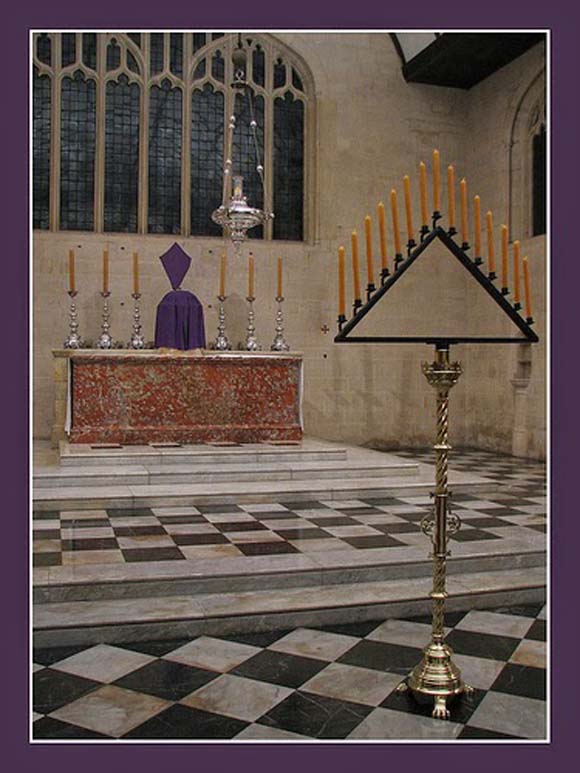
Tenebrae: Maundy Thursday
3.33k
On Maundy Thursday, Good Friday, and Easter Saturday, the Morning Offices of Matins and Lauds take a slightly different form. The offices are combined and become Tenebrae, meaning “darkness” or “shadows”. The liturgy is so called because it takes place in darkness or at least no additional light save for a triangular hearse upon which 15 unbleached candles are lit. As the office proceeds, each of the candles are gradually put out until all are extinguished at the end, representing the abandonment of Christ by his disciples.
 |
| The hearse with unbleached candles in the Priory Church |
Solemnity, sorrow, stillness – these are the hallmarks of this “Office of Darkness”. It is a fitting way, in addition to the other great liturgies of the Triduum, to enter more deeply into the mystery of Christ’s Passion and Resurrection.
Below is a recording of the Third Responsory from this morning’s liturgy (Maundy Thursday, Year B), in which we sung, with a sizeable congregation, the words:
R. Revelabunt caeli iniquitatem Iudae
et terra adversus eum consurget
et manifestum erit peccatum illius in die furoris Domini
cum eis qui dixerunt Domino Deo
recede a nobis scientiam viarum tuarum nolumus.
V. In diem perditionis servabitur malus
et ad diem furoris ducitur.
This Latin text can be translated into English as:
R. The heaves will show forth the iniquity of Judasand the earth will rise against himhis sin will be published on the day of the Lord’s wrath,together will those who said to the Lord:“Away from us. We do not want to know your ways.”V. He is reserved for the day of doomand he is to be brought to the day of punishment.
We will continue to post some highlights of Tenebrae over the Triduum. Please join us if you are near Oxford. Click here for details.
The third responsory, Revelabunt cæli, from the Tenebrae service on Maundy Thursday


